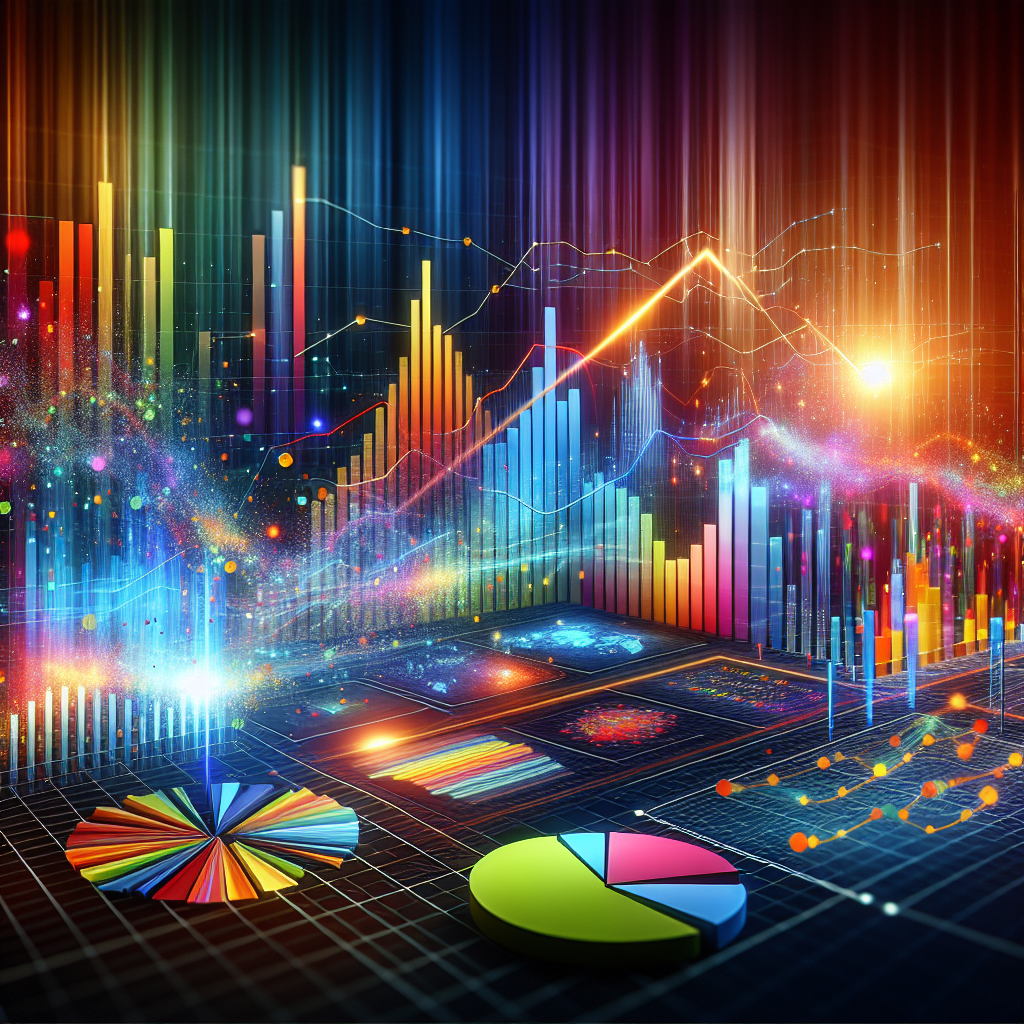Revolutionizing Data Analytics: The Power of Interactive Charts and Tables
In the ever-evolving world of data analytics, innovation is a constant companion. The latest breakthrough comes with ChatGPT's rollout of interactive charts, graphs, and tables. This game-changing update promises to take data analytics to unprecedented heights, offering users more dynamic and insightful ways to engage with their data. Let's dive deep into what makes this feature a standout and how it can transform your data analysis experience.
Unlocking the Potential of Interactive Charts
Interactive charts and tables have long been coveted in the realm of data analytics. These tools enable users to manipulate data views, extract more nuanced insights, and present findings in a visually compelling manner. ChatGPT’s interactive charts are designed to do just that—enabling data analysts to switch seamlessly between different data representations, hover over segments for detailed insights, and customize visual components in real time.
Imagine analyzing a 100-page annual report, such as Nvidia's, and being able to filter through the financial data to pinpoint revenue growth drivers with just a few clicks. Gone are the days of static, one-dimensional charts. With these new interactive features, you can engage with your data like never before.
How to Access and Utilize the Interactive Features
Currently, these cutting-edge interactive tools are available exclusively to users of the paid versions of ChatGPT—specifically, the GPT Plus, Team, and Enterprise plans. The rollout is gradual, so not all users may have access immediately. To start harnessing these features, ensure you have the GPT-4.0 model selected. The new update also includes connected apps, allowing you to pull data directly from your Microsoft OneDrive or Google Drive, further streamlining your data analysis workflow.
To get started, simply upload your document—be it from your local storage, OneDrive, or Google Drive—and let ChatGPT’s data analysis engine work its magic. If a static table is initially generated, you can easily request an interactive version, complete with selectable columns and rows for deeper analysis. This functionality includes generating various types of charts like bar graphs and pie charts, and even customizing colors to better align with your presentation aesthetics.
The Magic of Suggested Prompts
One of the standout features of ChatGPT's interactive data analytics is the inclusion of suggested prompts. These prompts dynamically appear as you interact with your data, offering intuitive next steps to deepen your analysis. For instance, after isolating research and development expenses, you can immediately ask for a trend analysis, prompting ChatGPT to generate a detailed graph highlighting relevant patterns.
These suggested prompts are not just convenient—they are powerful tools that enhance your ability to uncover insights you might not have considered. They act as a guide, helping you navigate through complex datasets with ease, ensuring you explore every potential angle.
Practical Applications in Business
For businesses, the implications of these new tools are vast. Consider the example of forecasting financial trends. By uploading an image or dataset, such as Nvidia's five-year stock performance, you can create interactive graphs that not only visualize historical data but also predict future trends. This forward-looking capability can be invaluable for strategic planning, investment decisions, and market analysis.
Additionally, the ability to manipulate and customize data visualizations in real time means that presentations and reports can be more tailored to your audience's needs. Whether it's changing the color scheme to match your company's branding or adjusting data views to highlight specific points, these interactive features provide a level of flexibility and professionalism that static charts simply can't match.
Enhancing Collaboration and Decision-Making
Interactive charts and tables also foster better collaboration among teams. By sharing these dynamic visualizations, team members can collectively analyze data, discuss insights, and make informed decisions. The ability to interact with the data directly within ChatGPT means that collaboration is not hindered by the limitations of traditional, static reporting tools.
Moreover, the integration with connected apps like OneDrive and Google Drive ensures that all team members have access to the most up-to-date data, improving accuracy and efficiency in the decision-making process. This seamless integration of data connectivity and analysis tools enhances the overall productivity of business operations.
Conclusion: A New Era in Data Analytics
ChatGPT's introduction of interactive charts, graphs, and tables marks a significant milestone in the field of data analytics. These tools offer more than just aesthetic improvements—they provide functional enhancements that empower users to engage with their data in new and meaningful ways. From dynamic visualizations to real-time customization and collaborative features, the potential applications are vast and impactful.
For those looking to stay ahead in the data analytics game, leveraging these new tools will be essential. As the rollout continues, we can anticipate even more innovative features and updates that will further revolutionize how we interpret and utilize data.
For more background information on interactive data visualization techniques, you might find this resource helpful: Data Visualization Techniques.
Stay tuned for more updates and be sure to explore the full potential of these interactive features to transform your data analysis experience.
Related News
- Revolutionary Data Analysis with Chat GPT 4.0: A Game Changer!
- The Transformative Power of ChatGPT in Coding: A Comprehensive Analysis
- Unleashing the Power of ChatGPT: The Upgrades You Need to Know
- A Deep Dive into ChatGPT: Features, Upgrades, and User Experiences
- Unleashing Creativity with Chat GPT: A Comprehensive Exploration

